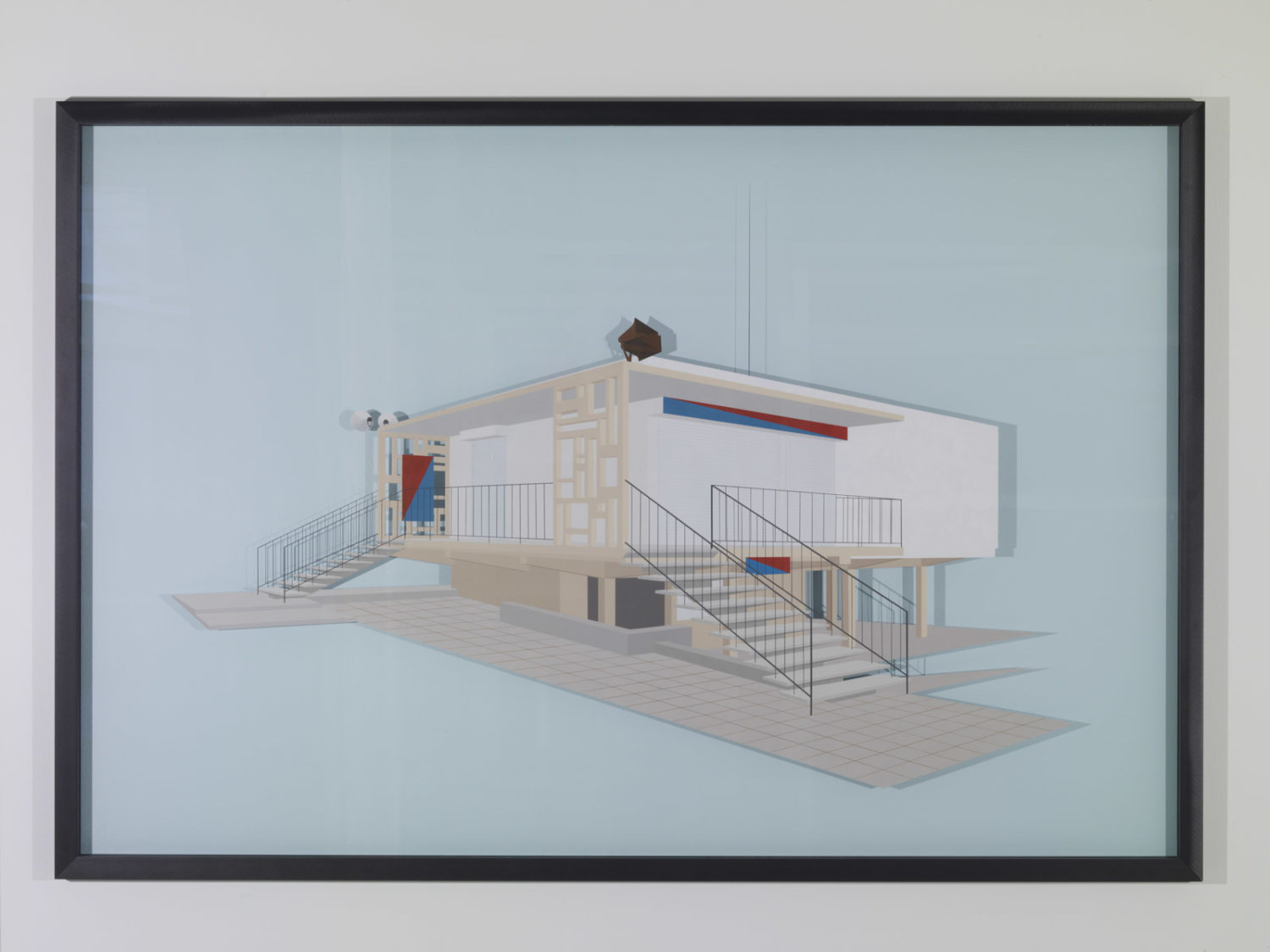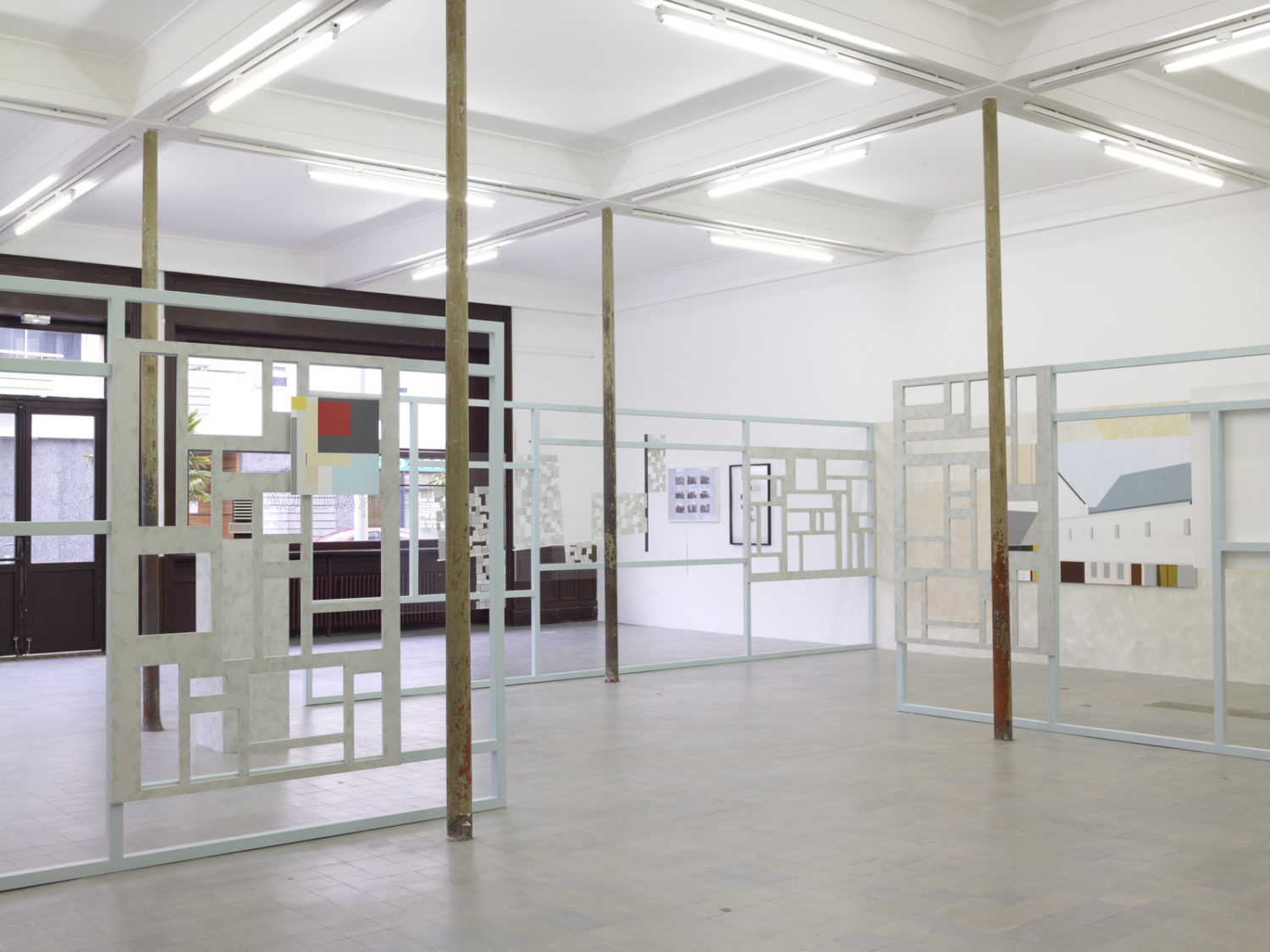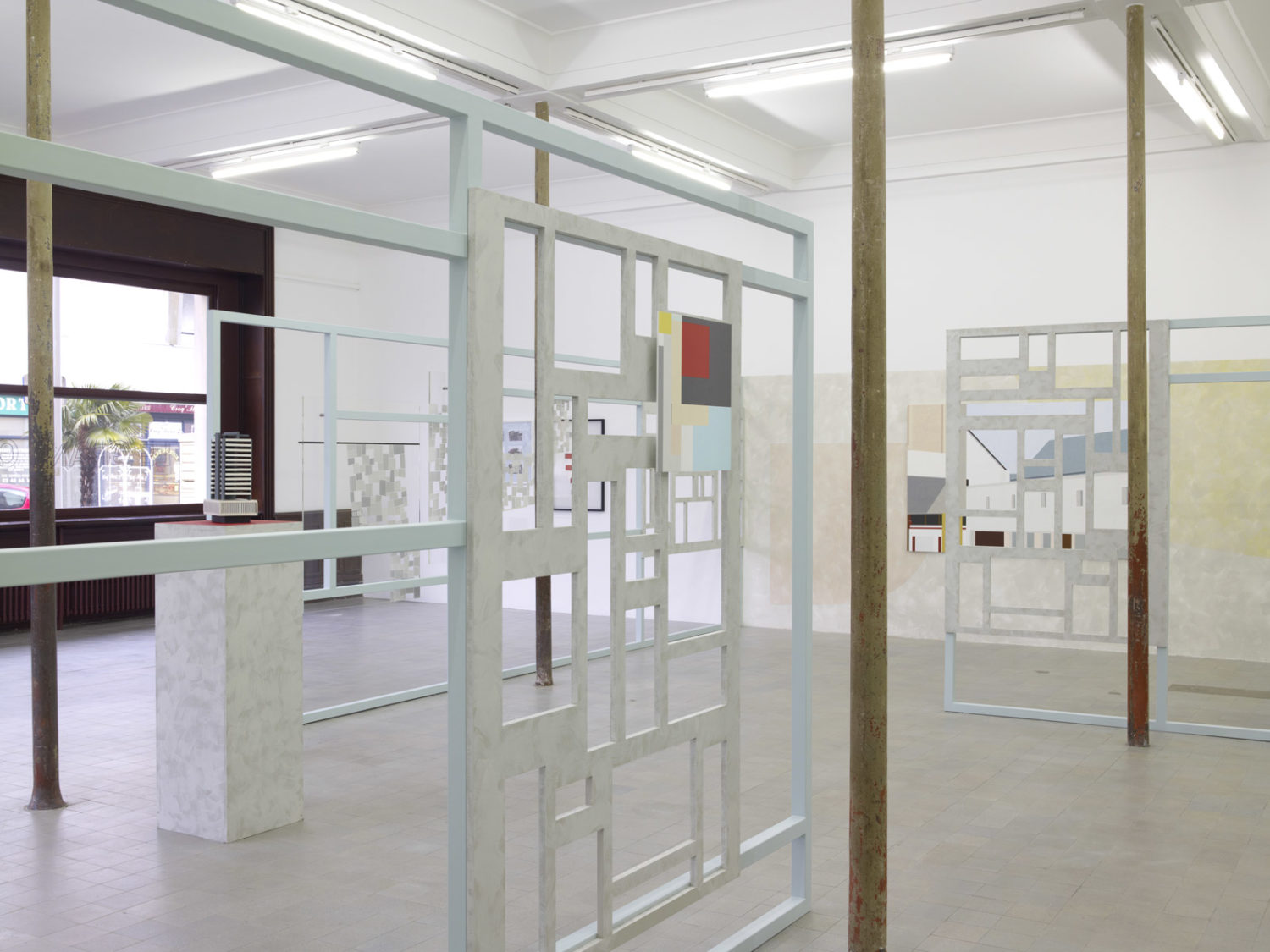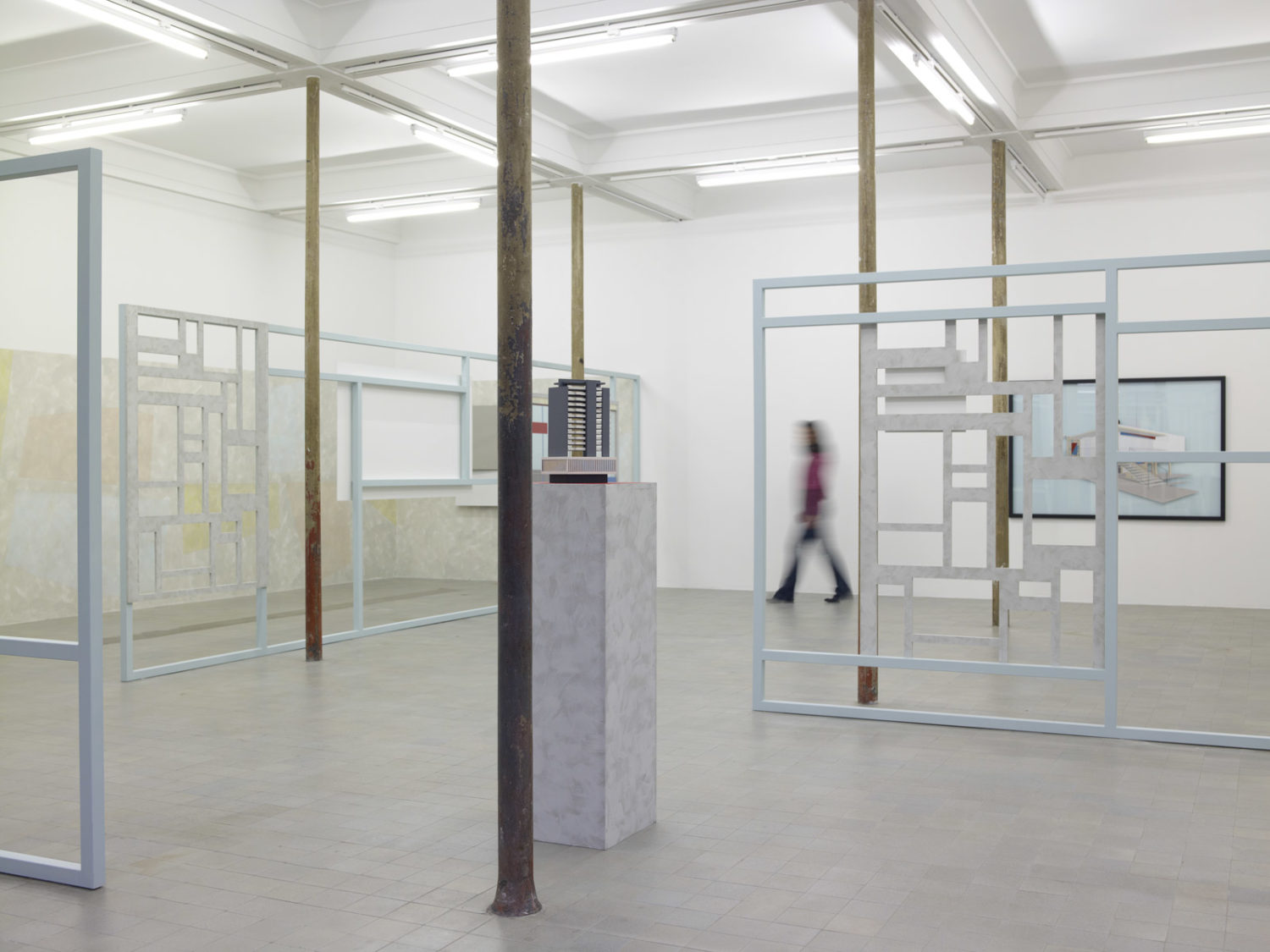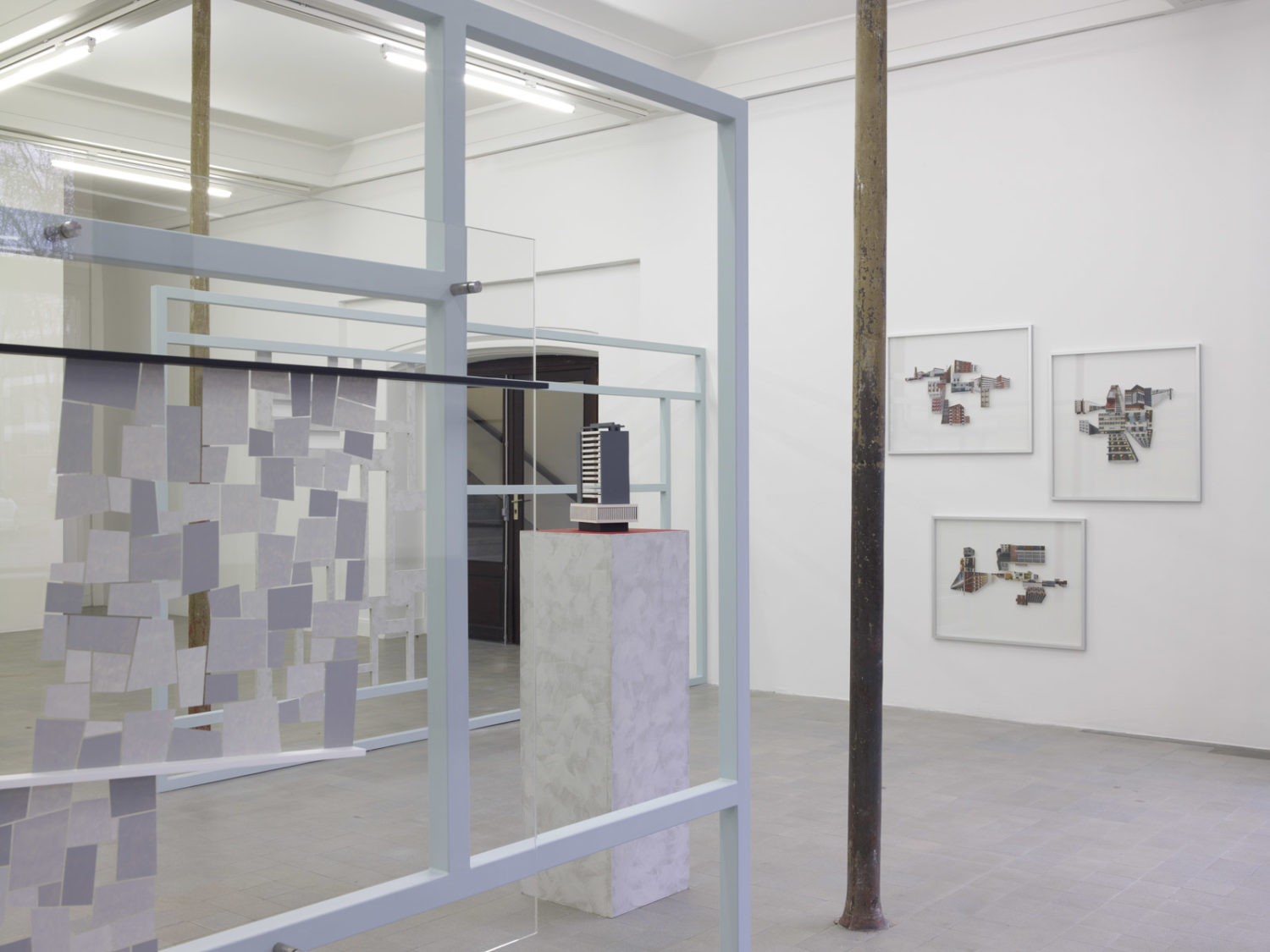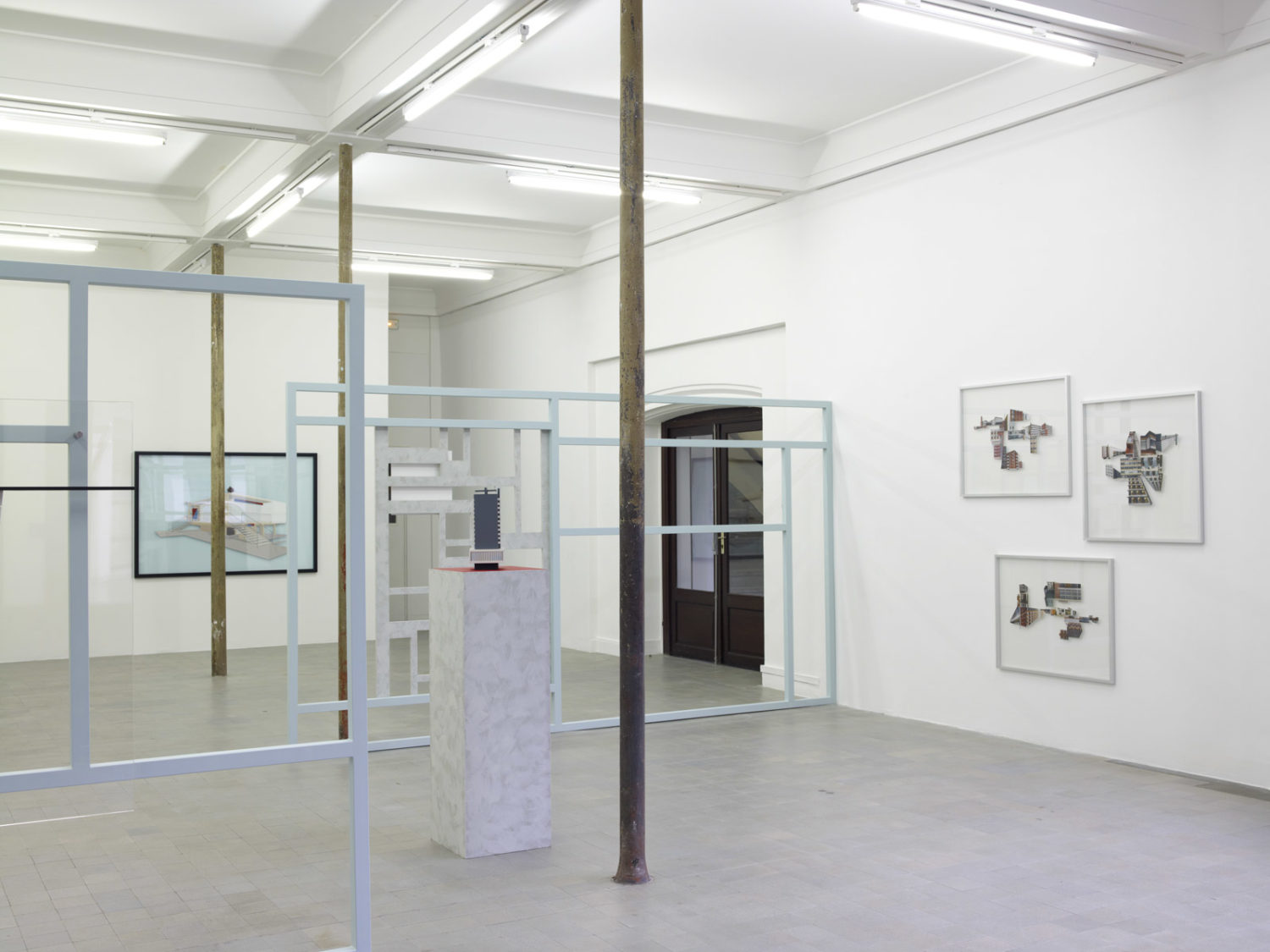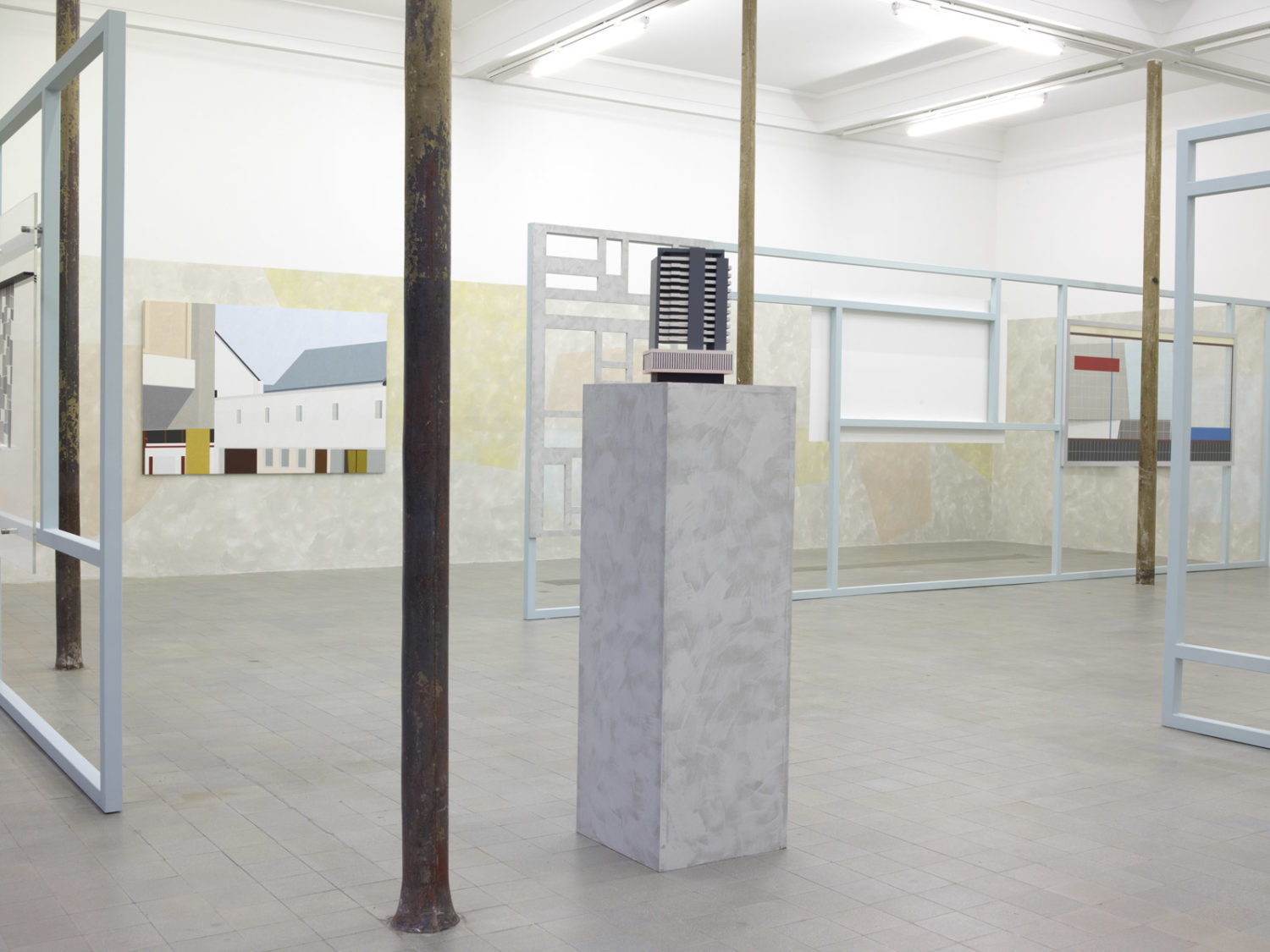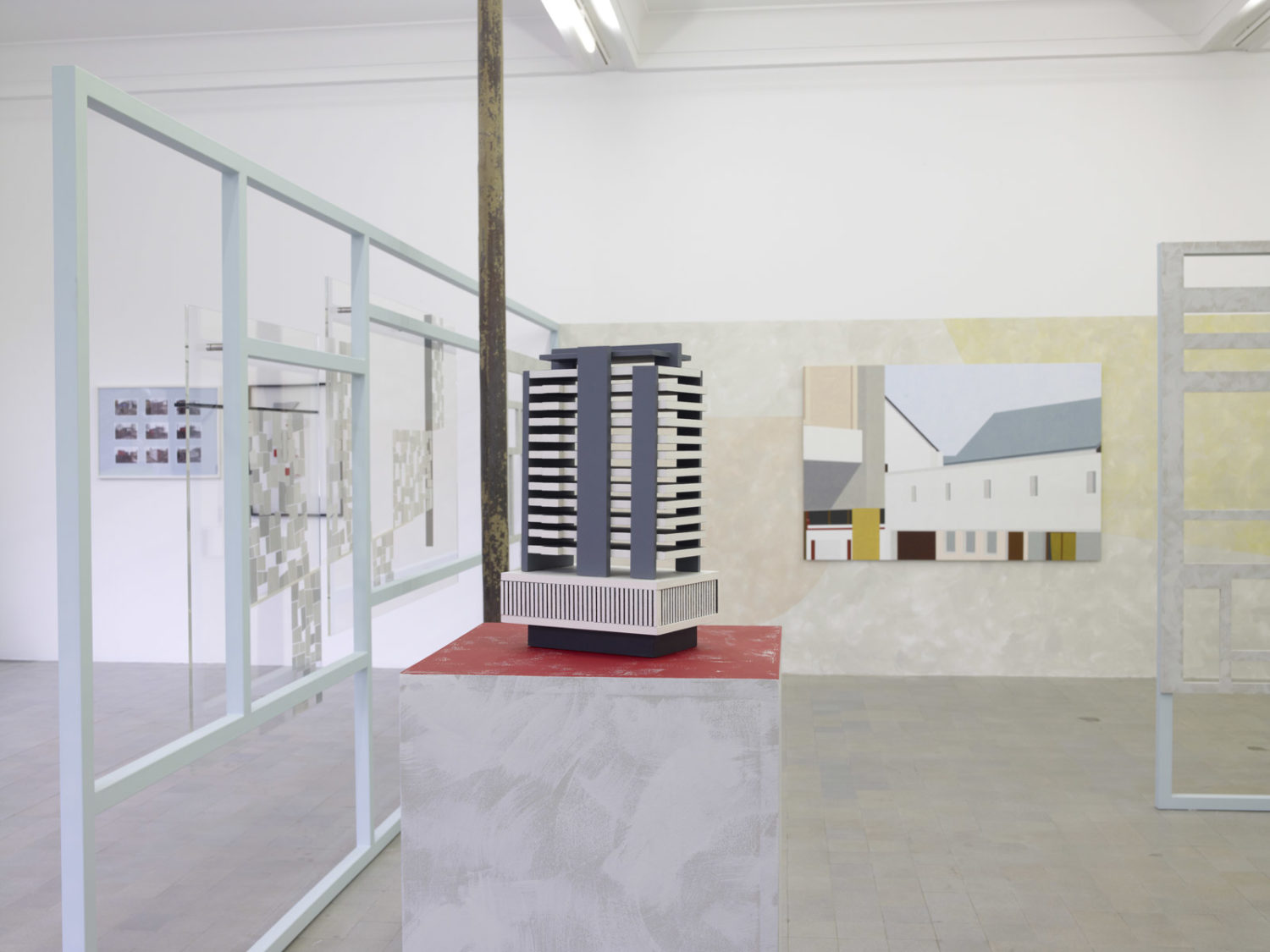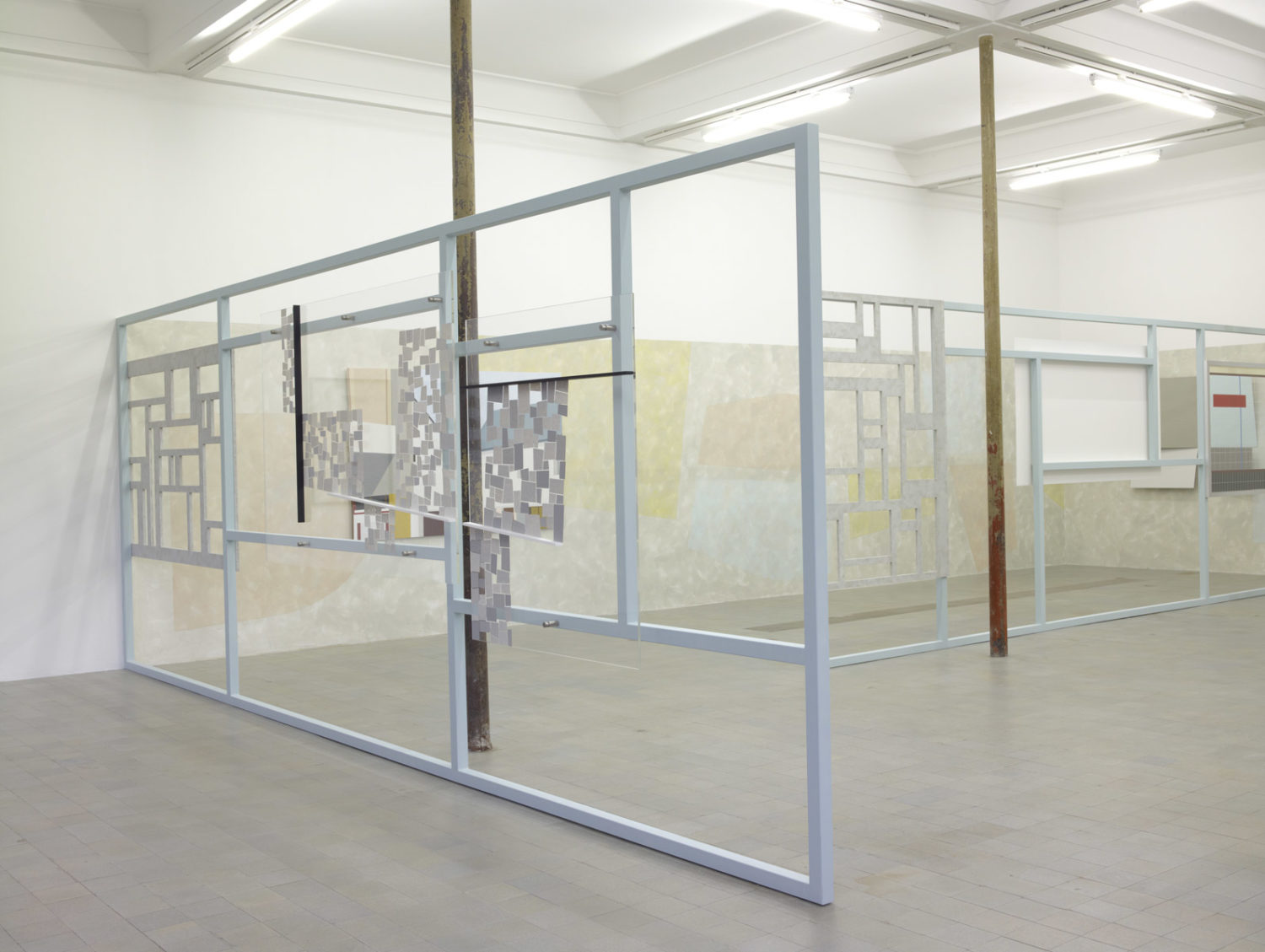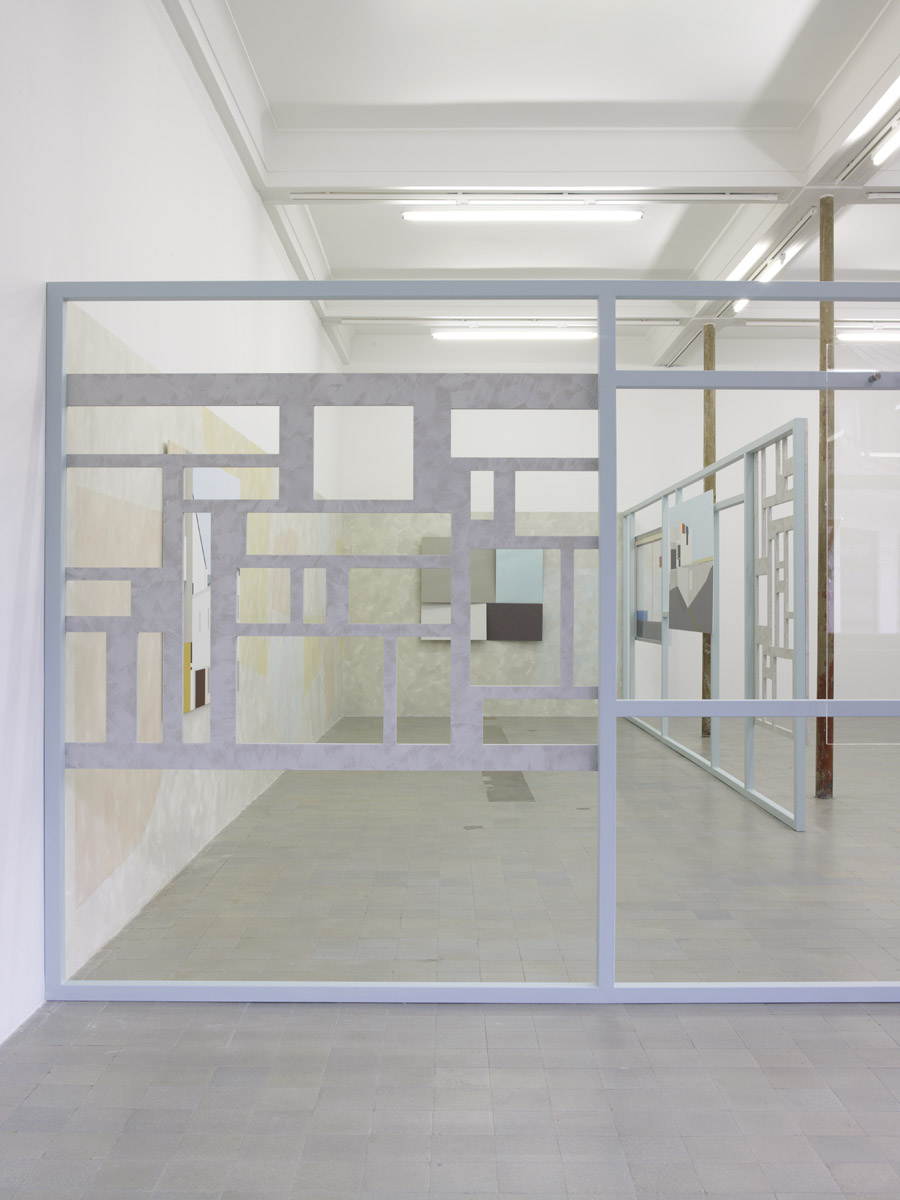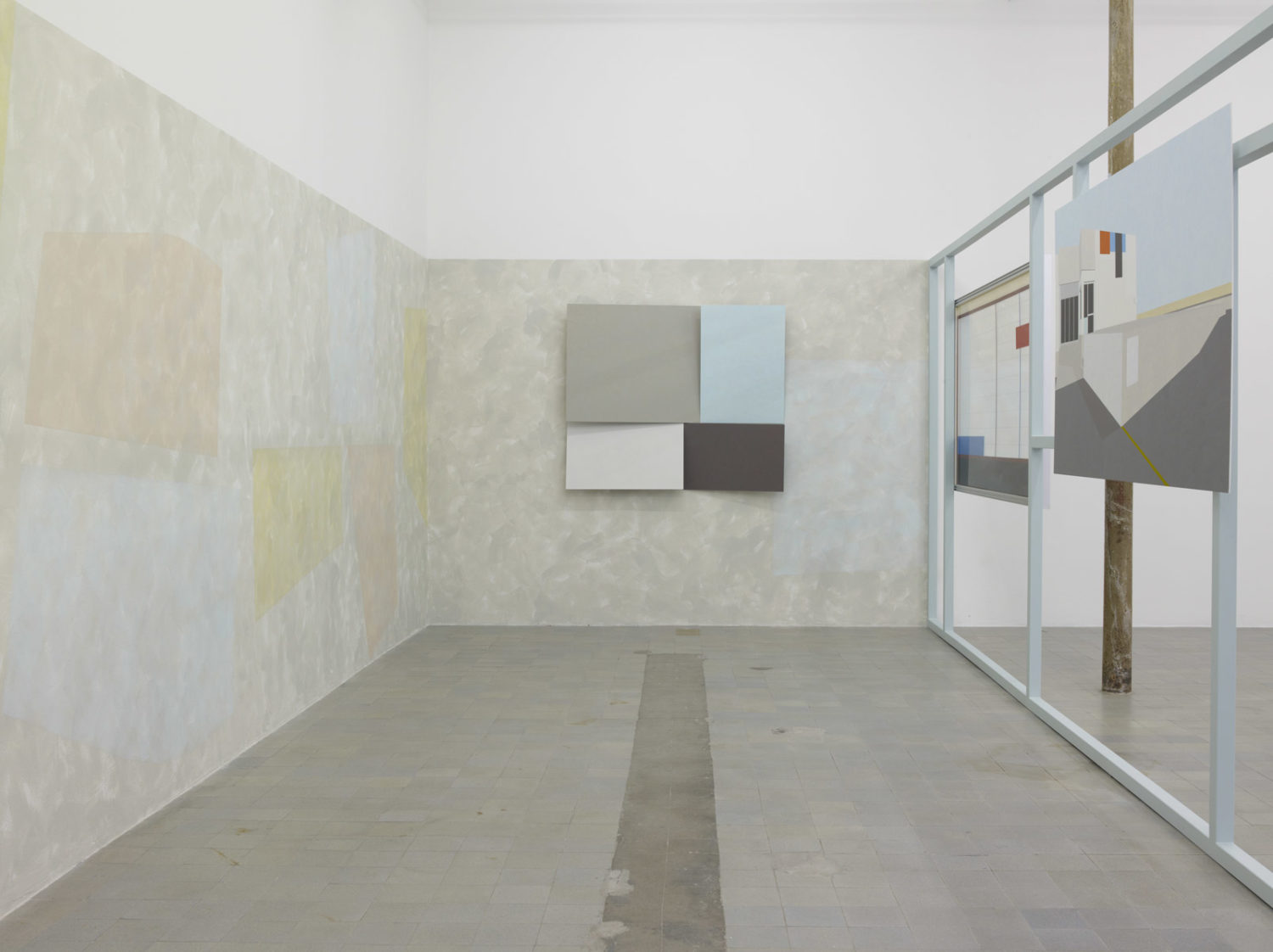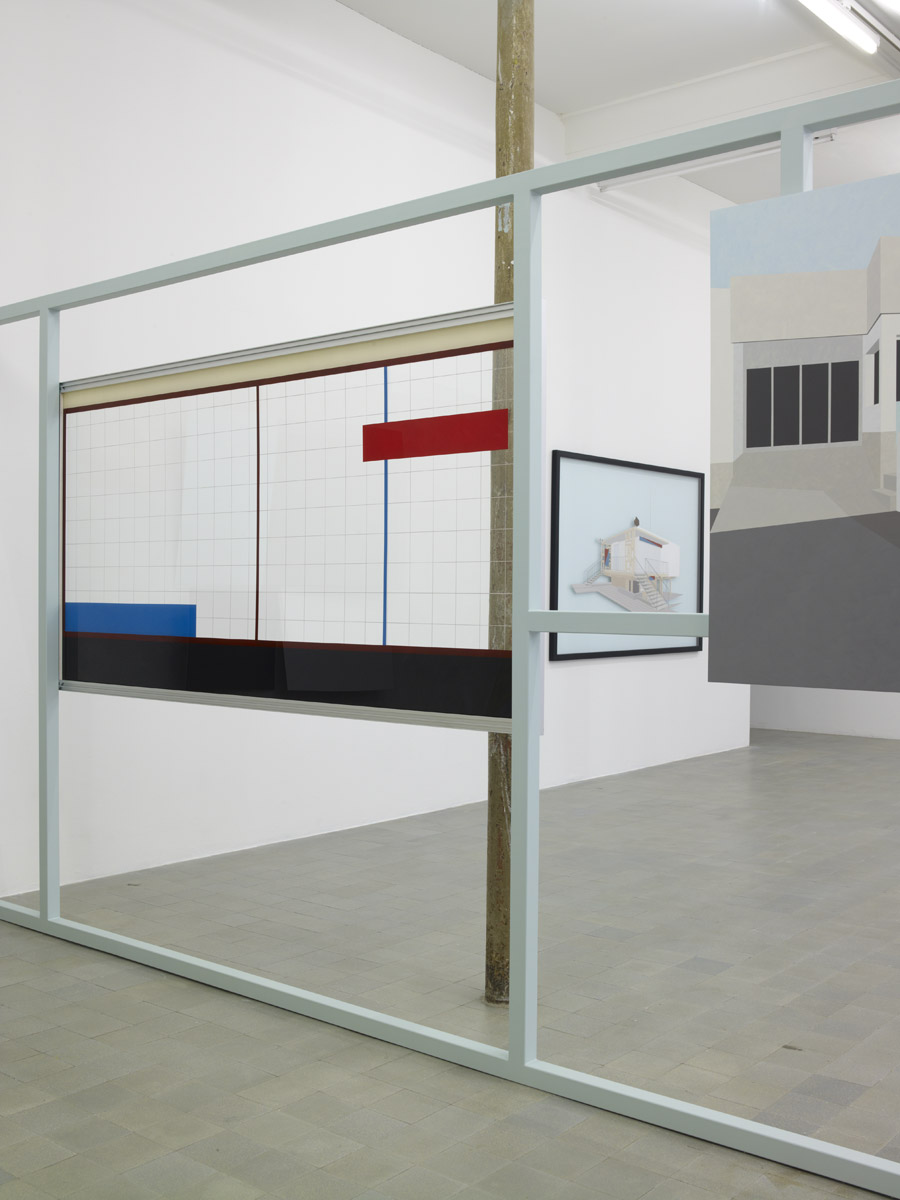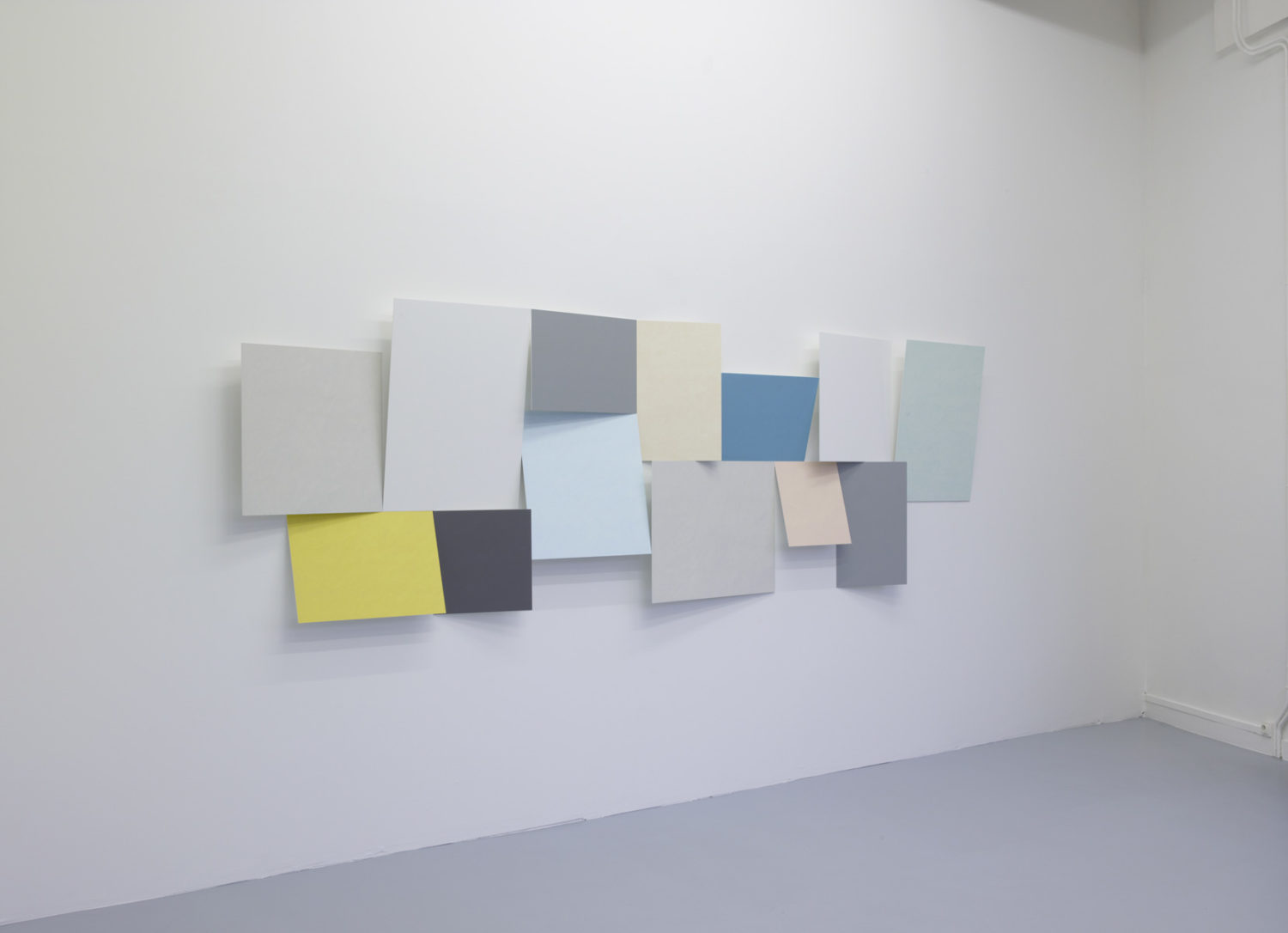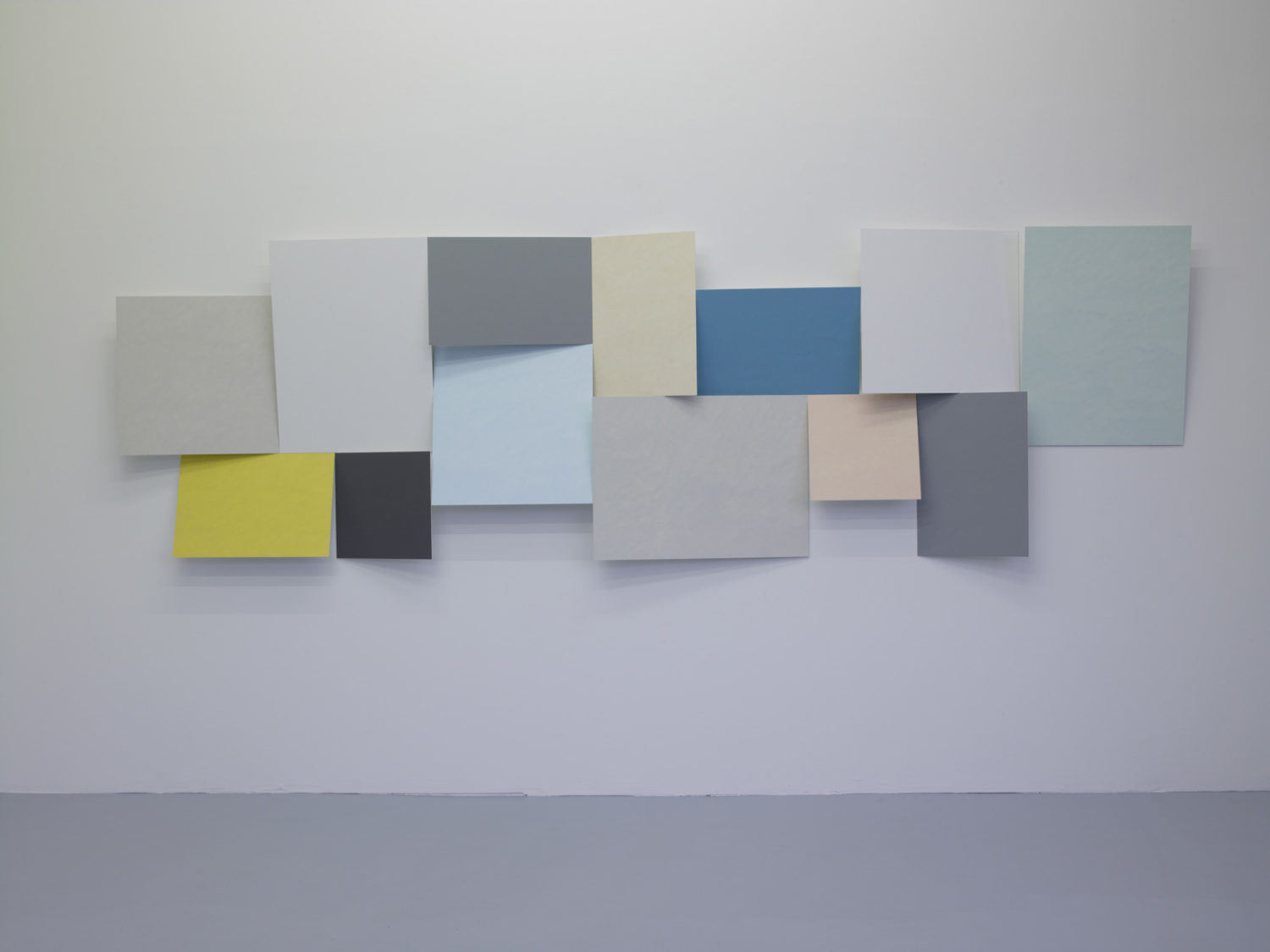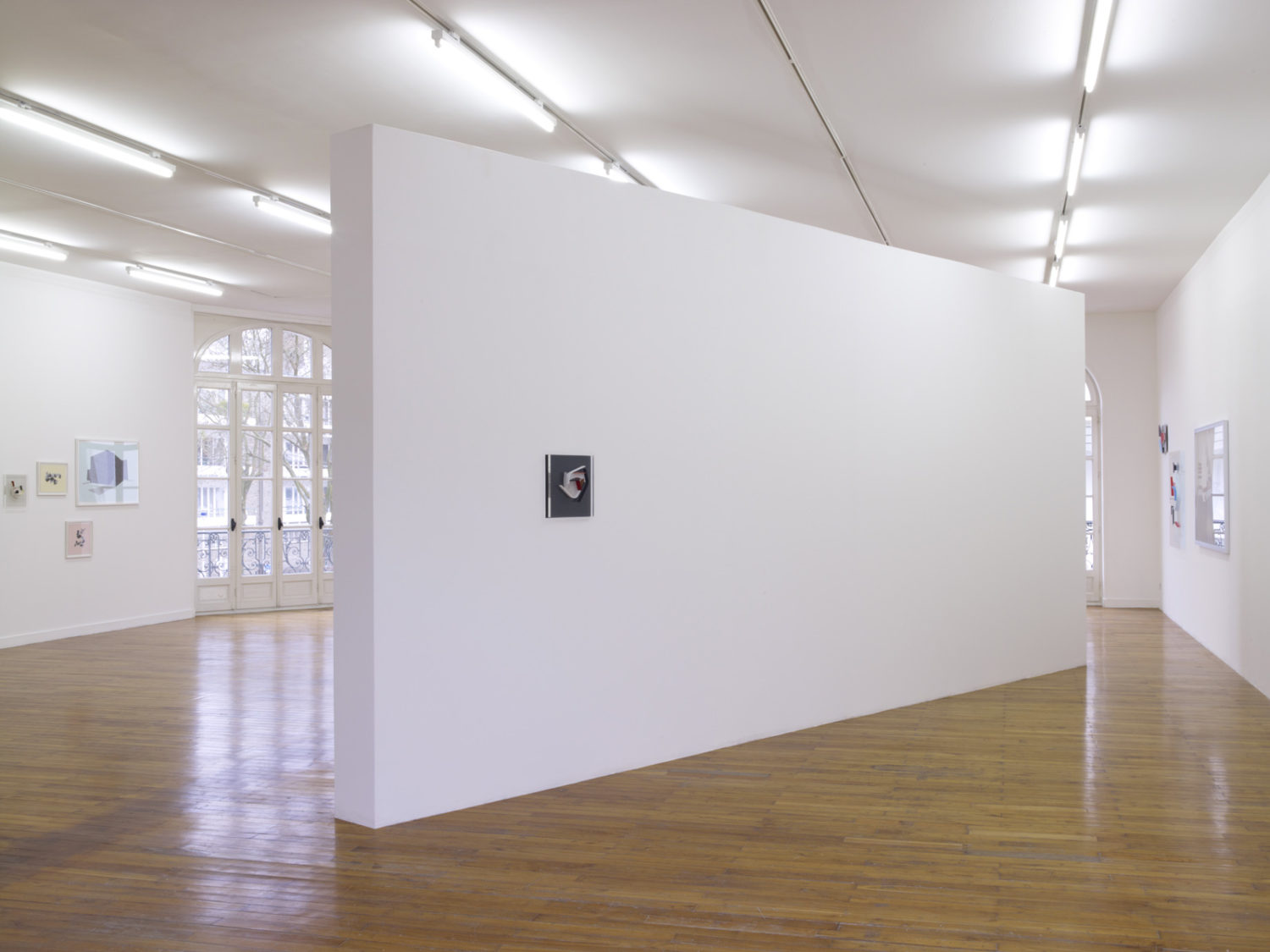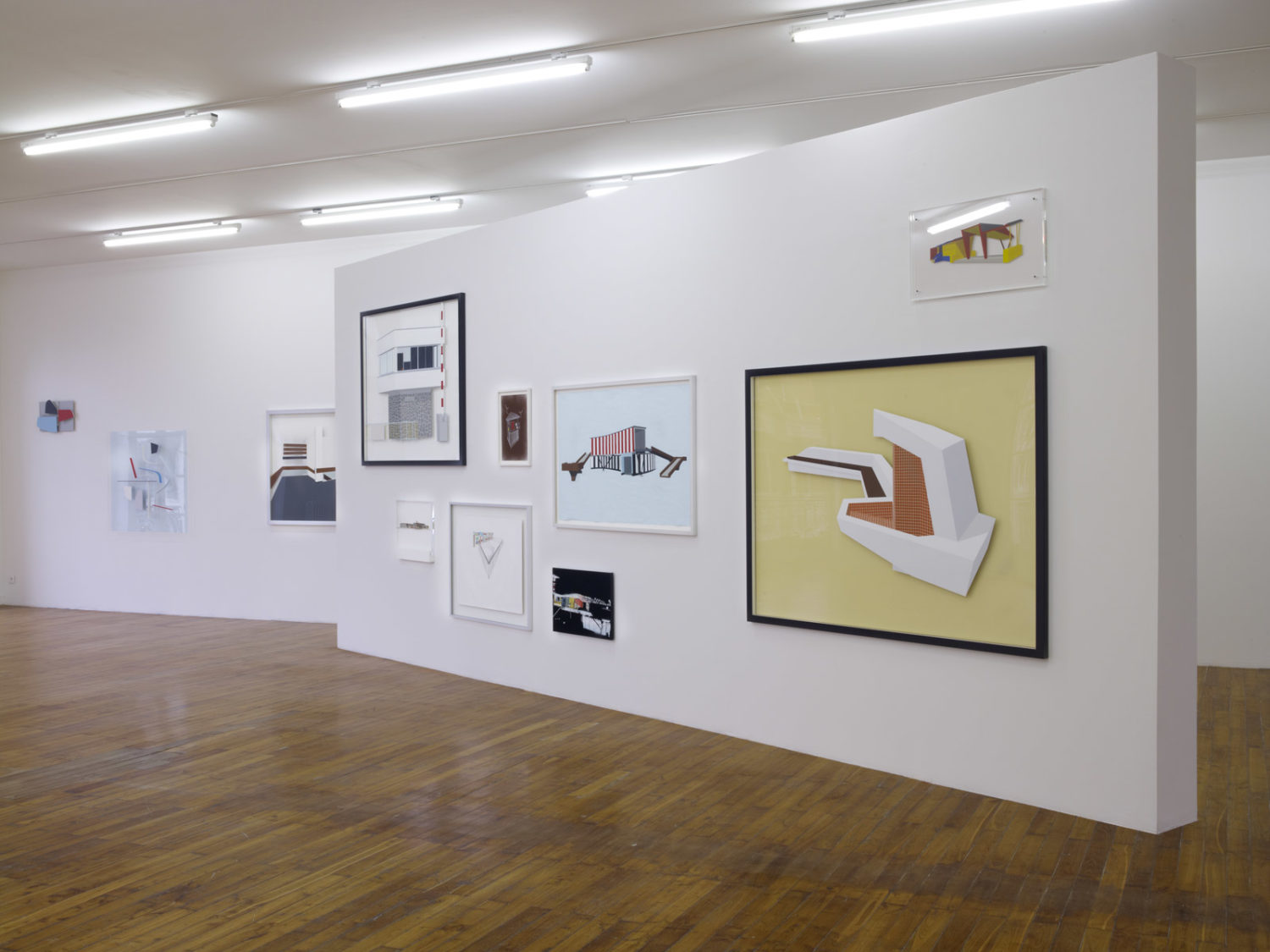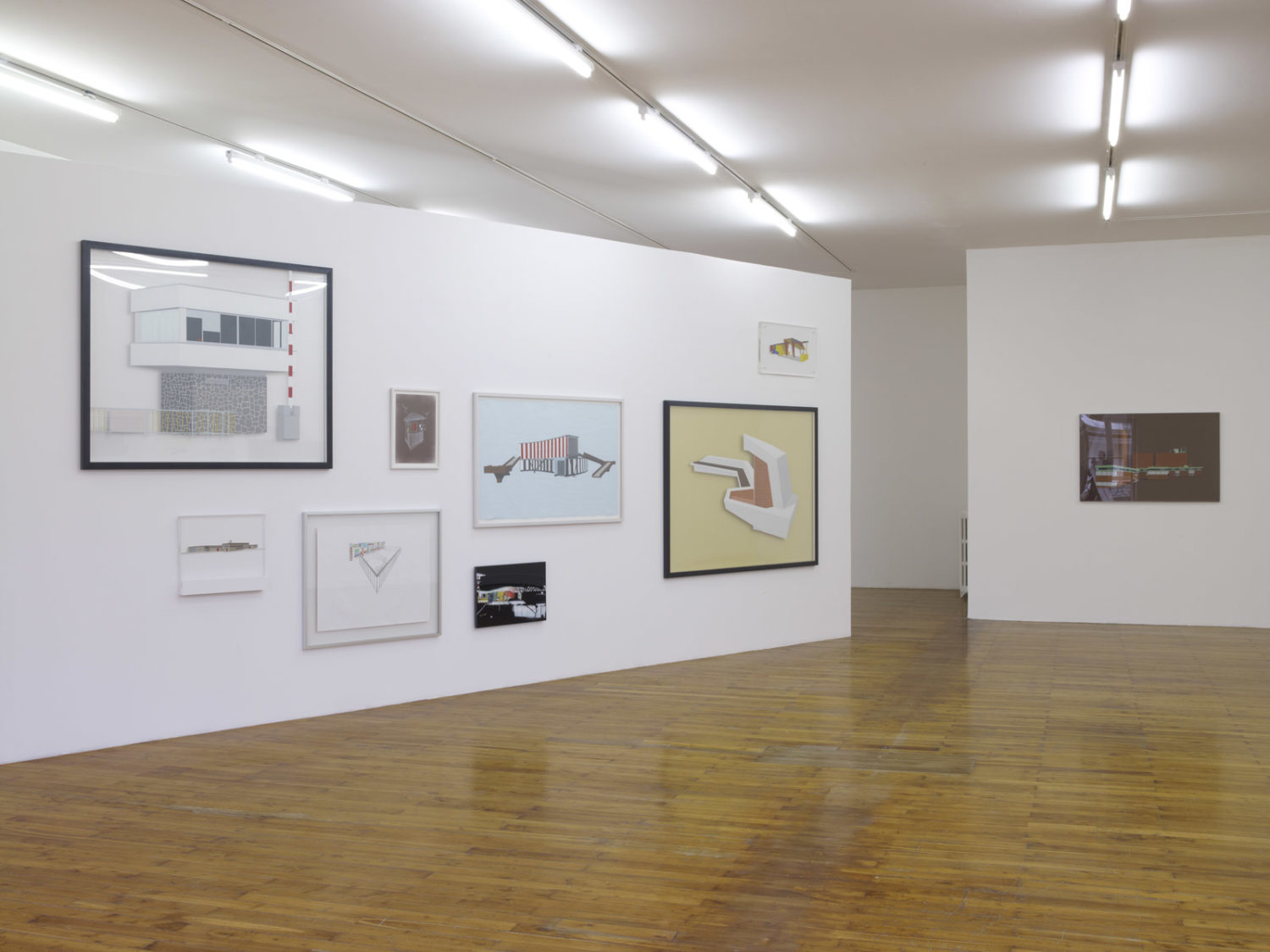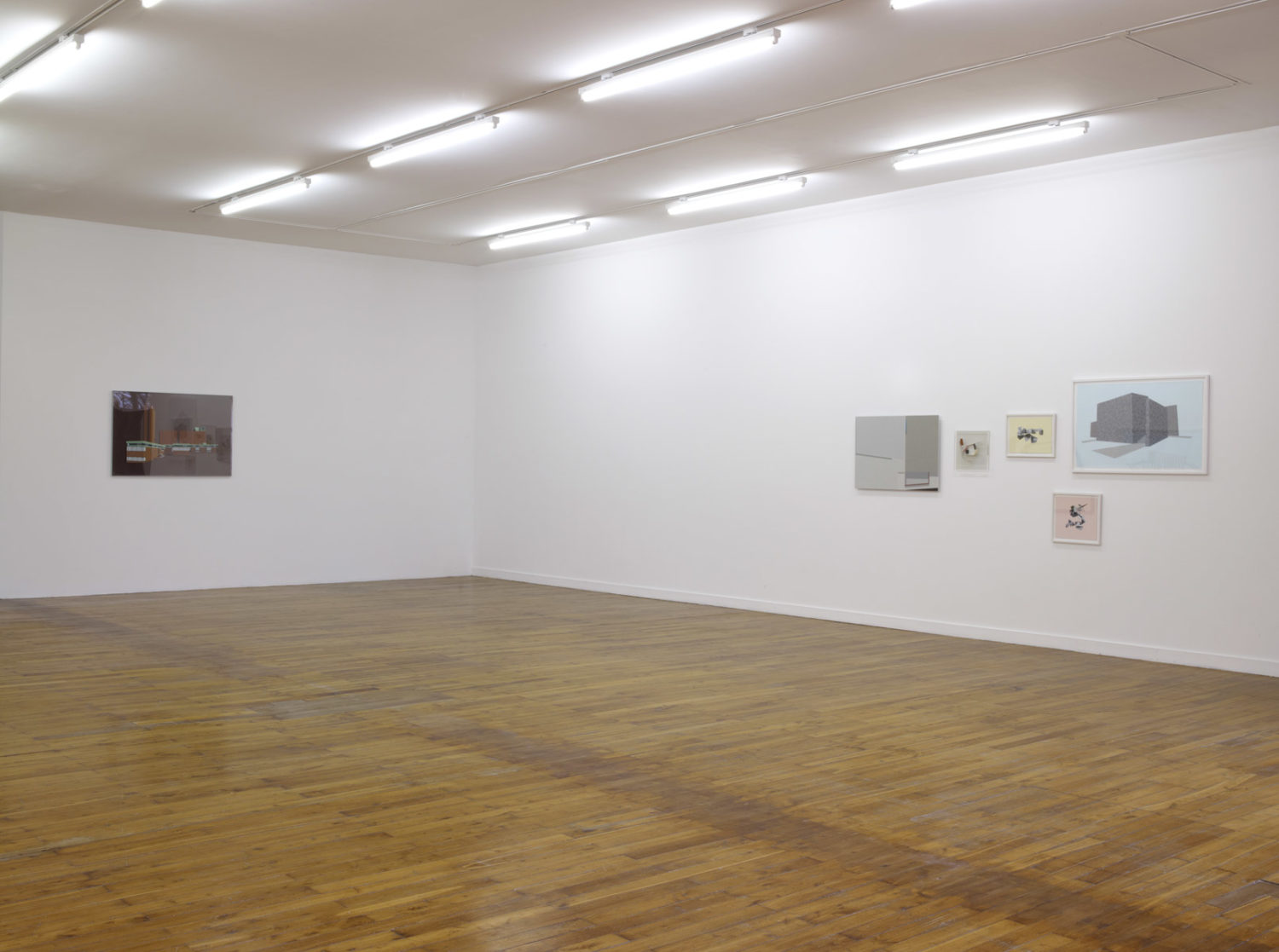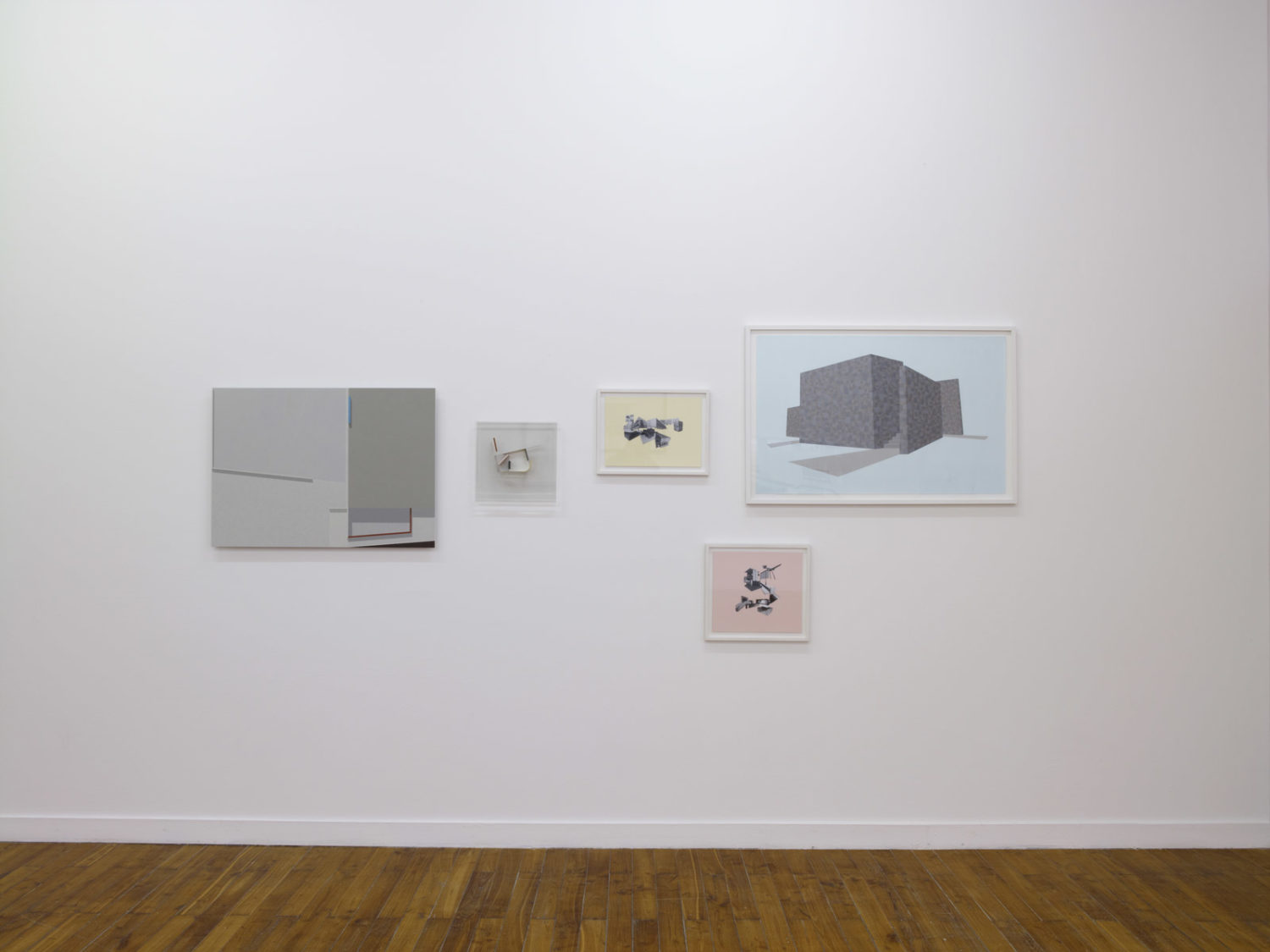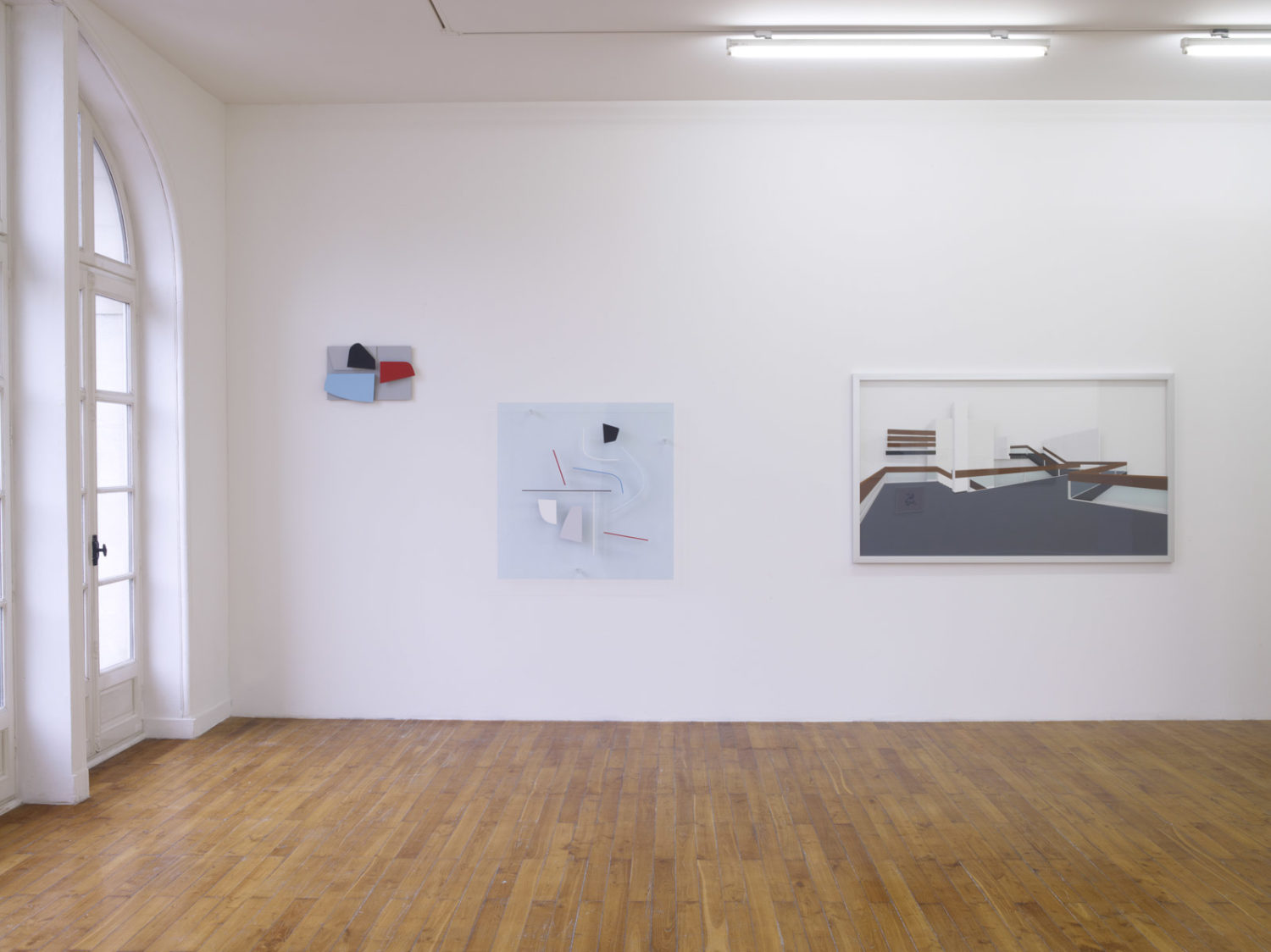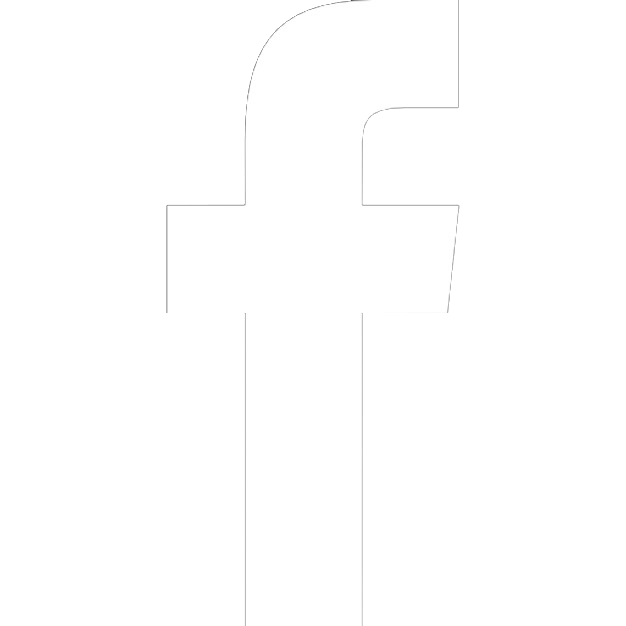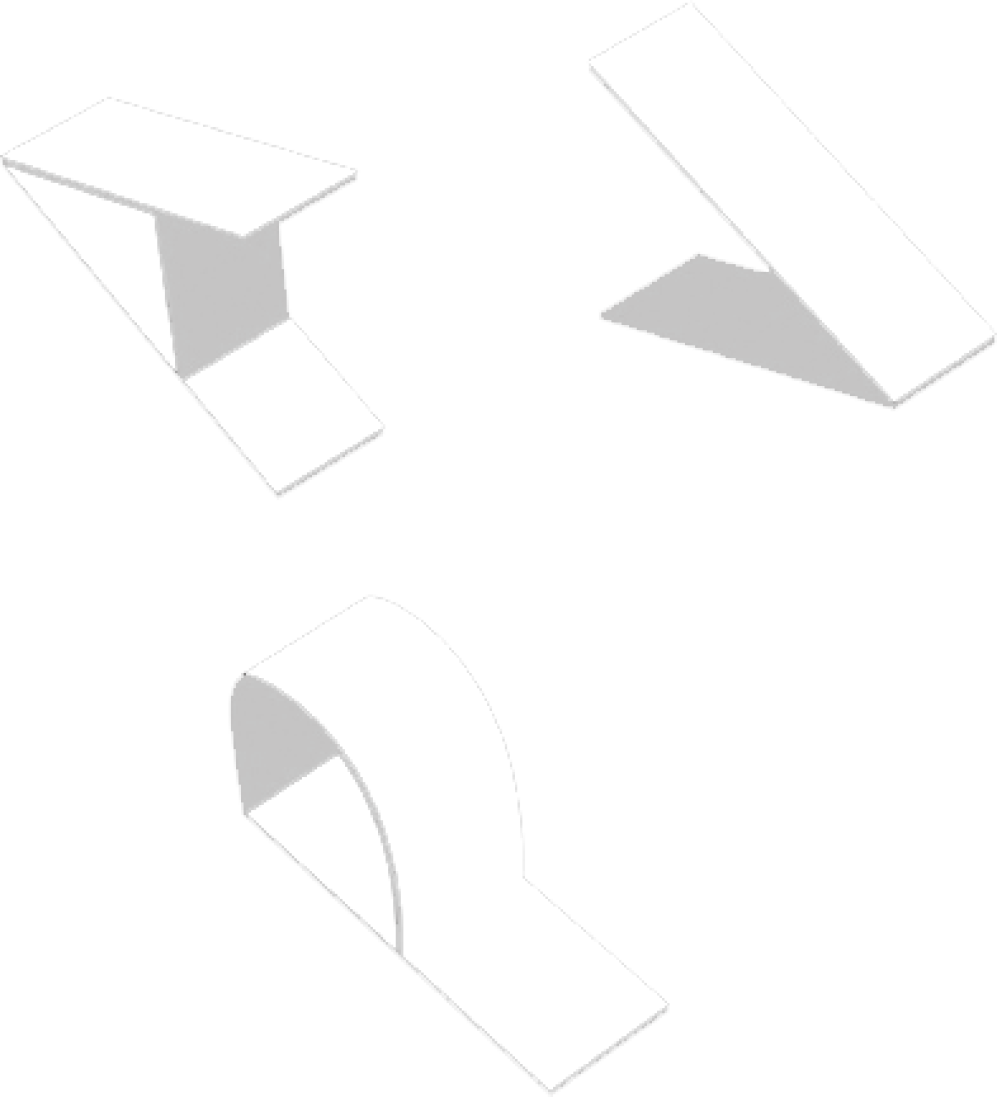Available documents
Exhibition
If Toby Paterson’s work draws on modernist architectural sources, it does it with a view to renewing our reading of this heritage and opening it up to the question of landscape. “A lot of people think that my work is about architecture. This isn’t totally true. Architecture is just a pretext for looking. My work is about observing and feeling a given environment.”
His wall paintings, drawings, collages and sculpted modules propose a singular mixture of poetic abstraction and physical experience – a voyage through transitional spaces. In addition to his visual art training, skateboarding has given the artist a hypersensitivity to the texture and structure of urban materials along with a fragmentary approach to the townscape. From the real, he samples buildings that are then examined documented, stripped back to their essence and taken apart.
His working process generally involves a research trip during which he takes hundreds of photos of post-war buildings, often referring to an aesthetic of the ordinary and the everyday. This visual material is then sorted and incorporated unmodified in certain pictorial compositions (the collage series Bricolages, or mental maps of lived experiences) or idealised in a painted version that amplifies the latent abstraction of the image. The choice of palette – between soft pastels and flat areas of pure colour – occupies an important place in this recomposition of a parallel landscape.
here is another distinct family of works: the “hypothetical reliefs”, produced after the voyage. He defines these completely abstract volumes as “subjective hypotheses formulated in response to a town ; condensations of forms and colours”.
These different expressions of experience bear witness to his particular attention to shifts in scale and to the dynamics of circulation, both physical ; felt by the visitor in the exhibition space ; and mental: between document and memory, reality and imagination, figuration and abstraction.
This to and fro movement is all the more palpable in that it is wilfully orchestrated by the artist. Toby Paterson has a liking for sophisticated exhibition structures that produce maze-like pathways and trompe l’oeil games. Inserted into the space using lightweight frames or perfectly-finished shelves that recall the modernist grid, his carefully crafted motifs appear to float, like an atmosphere.These suspended architectural sections invent a complex space-time, both referential and emptied of all material ties: the permanent reconfiguration of remembered landscape.
Éva Prouteau
The project is supported by Fluxus (Franco-British Fund for Contemporary Art)
Production
Artworks
206 x 106 x 3,5 cm
Courtesy The Modern Institute, Glasgow
75 x 40 x 30 cm
Courtesy The Modern Institute, Glasgow
130 x 110 cm each
Courtesy The Modern Institute, Glasgow
80 x 80 x 3 cm
Courtesy Lange & Pult Gallery, Zürich
80 x 80 x 2 cm
Courtesy Lange & Pult Gallery, Zürich
90 x 70 x 3 cm
Courtesy Lange & Pult Gallery, Zürich
86 x 61,5 x 2 cm
Courtesy The Modern Institute, Glasgow
42,3 x 30 x 2,5 cm
Courtesy The Modern Institute, Glasgow
156 x 122 cm
Courtesy The Modern Institute, Glasgow
30 x 30 x 7,5 cm
Courtesy The Modern Institute, Glasgow
120 x 80 x 3 cm
Courtesy The Modern Institute, Glasgow
146 x 116 x 3,5 cm
Courtesy The Modern Institute, Glasgow
50 x 40 x 2,5 cm
Courtesy The Modern Institute, Glasgow
48,7 x 36,2 x 2 cm
Courtesy The Modern Institute, Glasgow
96,5 x 78,5 x 2,5 cm
Courtesy The Modern Institute, Glasgow
Courtesy The Modern Institute, Glasgow
60 x 40 x 3 cm
Courtesy The Modern Institute, Glasgow
177,2 x 128,2 x 3,3 cm
Courtesy The Modern Institute, Glasgow
70 x 40 x 3 cm
Courtesy The Modern Institute, Glasgow
59,5 x 84 x 3 cm
Courtesy The Modern Institute, Glasgow
30 x 30 cm
Courtesy The Modern Institute, Glasgow
39 x 36 cm
Courtesy The Modern Institute, Glasgow
96,5 x 126,5 x 3,5 cm
Courtesy The Modern Institute, Glasgow
39 x 36 cm
Courtesy The Modern Institute, Glasgow
120 x 195 x 5 cm
Courtesy The Modern Institute, Glasgow
100 x 100 x 4 cm
Courtesy The Modern Institute, Glasgow
31 x 48 x 5 cm
Courtesy The Modern Institute, Glasgow
Biography
Born in 1974 in Glasgow, (Scotland) where he lives and works.
The artist is represented by the Modern Institute (Glasgow).
